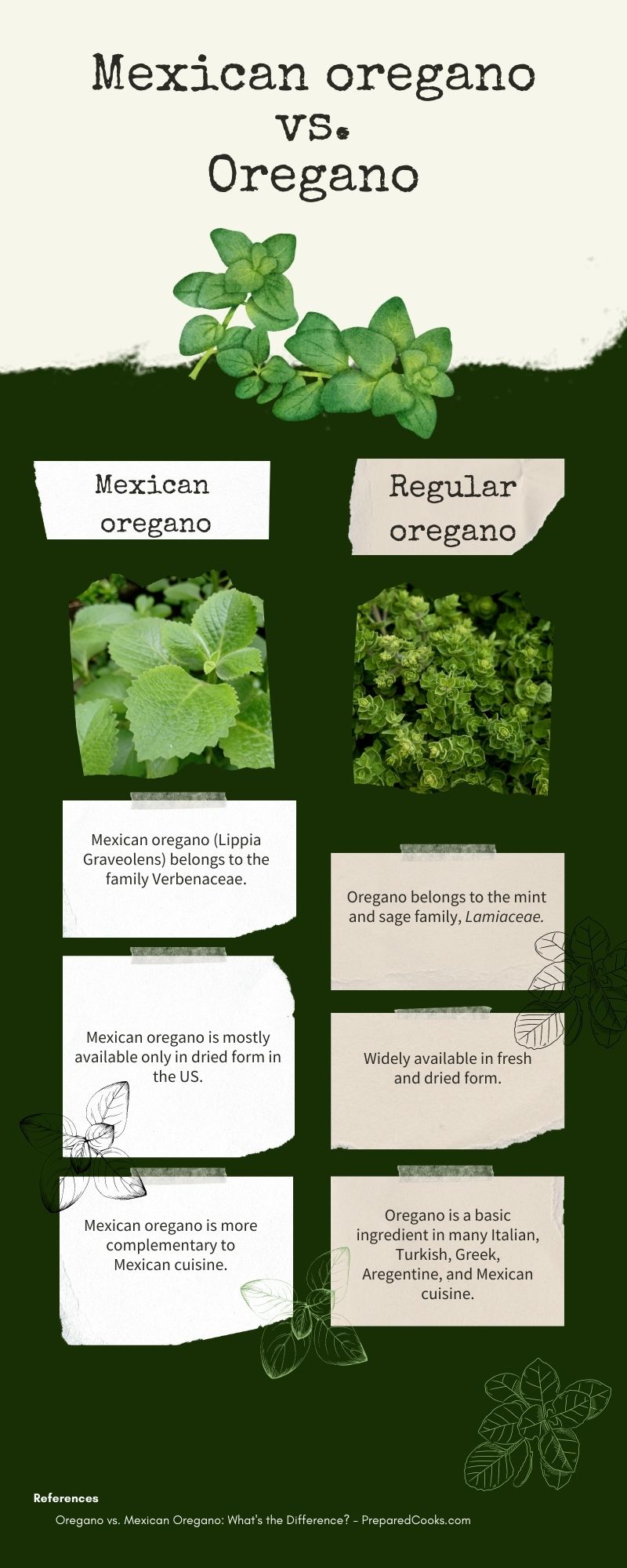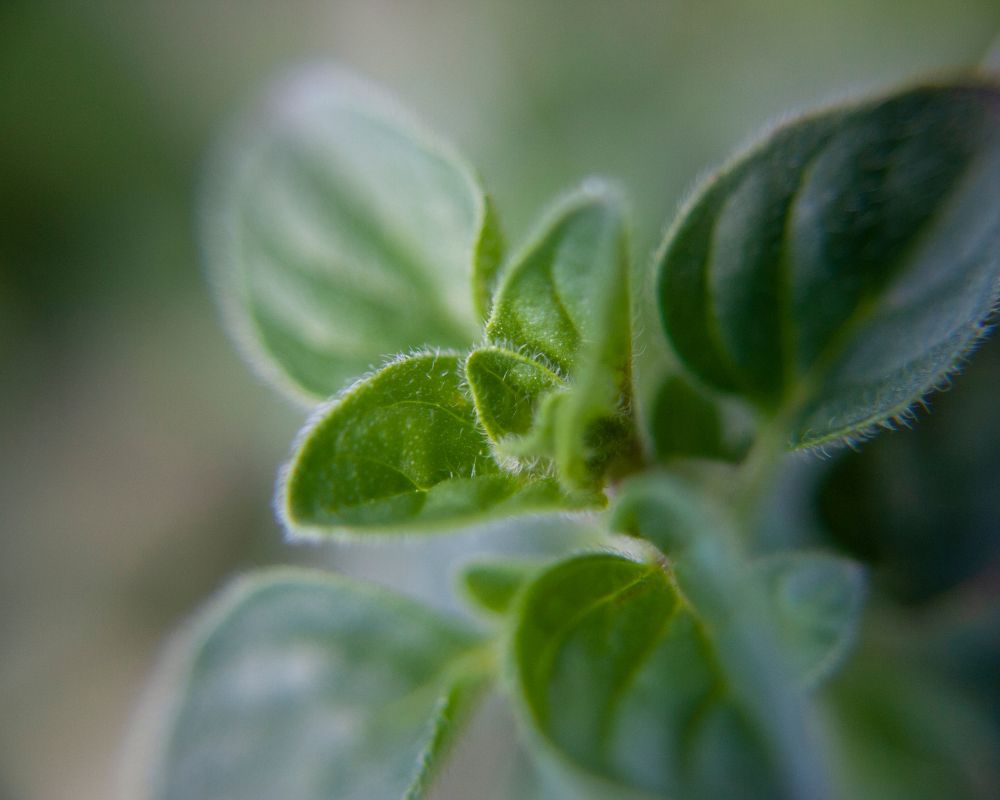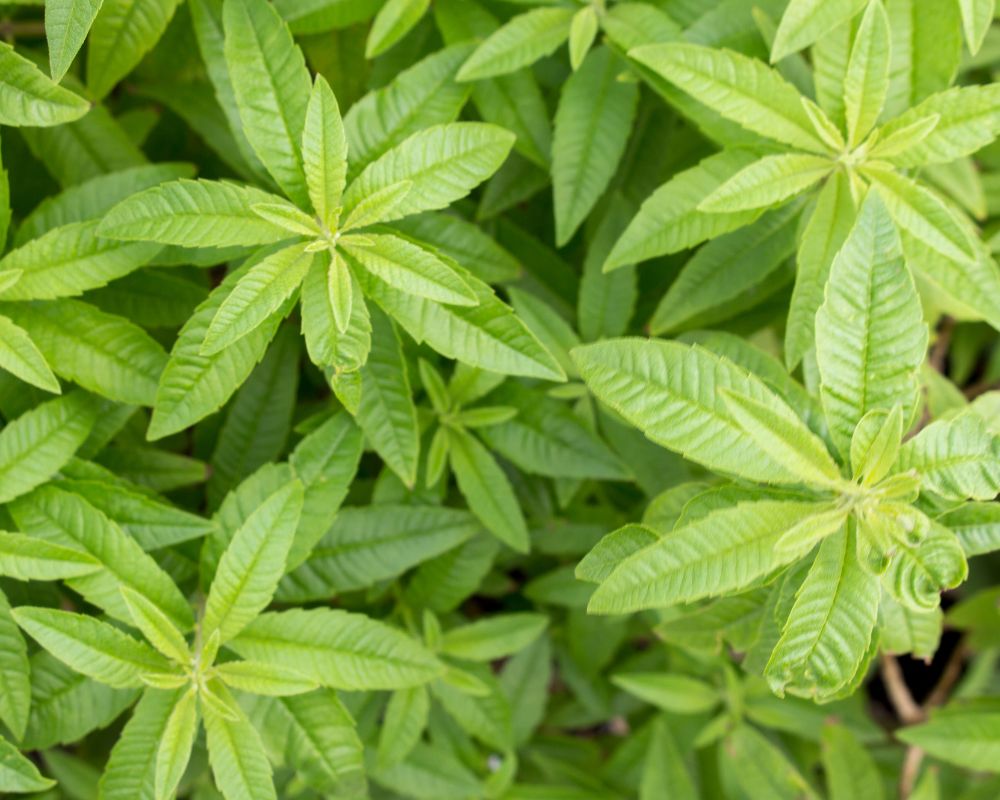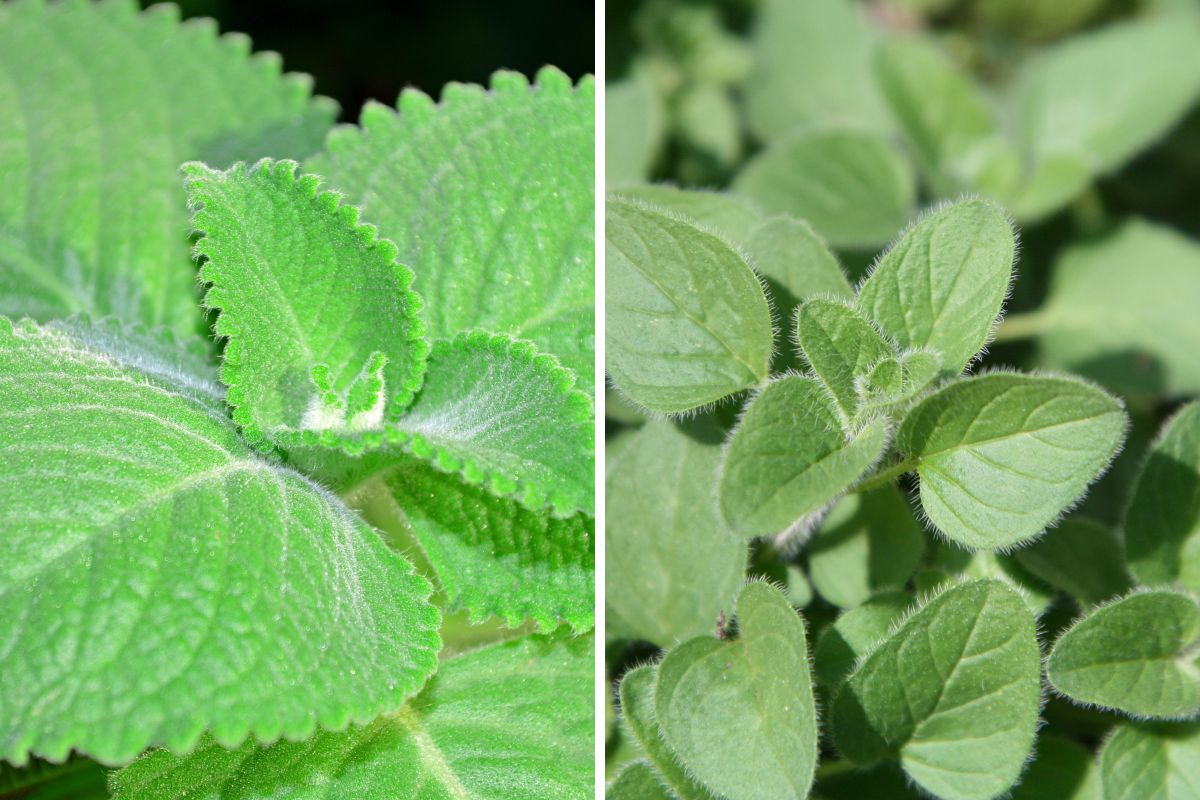Mexican oregano and its Mediterranean counterpart — the regular oregano you see in grocery stores — are aromatic herbs. A staple in Mexican dishes such as tacos, Mexican oregano has a stronger flavor and carries citrusy and earthy notes. Regular oregano is mintier and mildly sweet, commonly used in Italian pasta and pizza recipes.
Table of Contents
Is Mexican oregano the same as oregano?
Mexican oregano and regular oregano are not the same. Mexican oregano (Lippia graveolens) has an earthy, floral, and citrus flavor with hints of mild anise or licorice. Its citrusy notes resemble that of its cousin, lemon verbena. In Central and South America, it’s also called Puerto Rican oregano.
Mediterranean oregano (Origanum vulgare), known as oregano or wild marjoram, is closely related to sweet marjoram. It carries a subtly sweet taste with peppery undertones.
mexican oregano vs. oregano – main differences

Here are the main differences between these two herbs.
Origin
Mexican oregano is a fragrant herb derived from the Mexican oregano plant coming from the Verbenaceae family (also known as the Verbena family).
It thrives in the desert climates of the Latin American region, including Mexico, the American Southwest, Central America, and some parts of South America.
Oregano comes from a different plant, which belongs to the Lamiaceae family. It’s native to the Mediterranean region and in Western and Southwestern Eurasia.
Appearance
Mexican oregano leaves are pointy and shaped like arrows with a color ranging from green when fresh to dark sage green to tan when dried.
On the other hand, fresh, spade-shaped Mediterranean oregano leaves can be bright or olive green; the color becomes darker (sometimes close to brown) when dried.
Apart from this difference in appearance, you can also distinguish the two in terms of texture. Mexican oregano is chunkier, while regular oregano is finer.
Flavor
Bringing zest to recipes, Mexican oregano has a citrus flavor blended with subtle hits of anise and licorice. It pairs well with other mainstays in Mexican dishes, such as chile peppers, cumin, and garlic.
As oregano is part of the mint family, it is mintier and milder than its Mexican counterpart.
Generally, it’s sweet with bitter and pepper-like undertones, but the flavor will vary for types of oregano. For example, Italian oregano — a versatile ingredient in Italian dishes, including pasta and soups — is milder. Turkish oregano is more pungent. Meanwhile, Greek oregano has a savory and earthy flavor.
Applications
Many Mexican and Tex-Mex recipes call for Mexican oregano. From the traditional pozole (a red chile-incorporated brothy soup) to the popular side dish, Mexican black beans. It also adds a robust flavor to salsas, sauces of enchiladas, and meat mixtures of tacos and burritos.
This herb is found in chicken-and-rice recipes in Central and South American countries. It’s also used as a traditional seasoning for braised pork and beef.
Apart from the Mexican staple spices and herbs, Mexican oregano also goes well with avocado, tomatoes, and fresh cheese. Add a dash of Mexican oregano alongside salt and pepper if you want to lend more complexity to the simplest dishes.
Mediterranean oregano is most notably common in pizza, pasta sauces, and just about any tomato sauce dish. Apart from its sweet-and-earthy flavor, it adds a fragrant aroma that makes recipes even more flavorful.
Oregano is also ideal when making salad dressings, marinades, herb butter, dips (mix it with oil), and cream sauces. Cooks also usually mix them with other popular Mediterranean herbs, including basil, parsley, and thyme.
Shelf life
Fresh oregano leaves can last up to 14 days when stored in the refrigerator. You will have about 7 days to spend fresh Mexican oregano.
When dried, you can use them anywhere from 1 to 3 years if kept in a cool, dark place. Though they can technically last longer, note that they can lose their potency over time.
Form
Both oregano and Mexican oregano can be used as a fresh or dried herb. They are also available in powder form, ideal for marinades, rubs, and spice pastes for stews, soups, and chiles.
Comparison Table
| Mexican oregano | Oregano | |
| Origin | Derived from the Lippia graveolens plant, which is native to Mexico, the American Southwest, Central America, and some parts of South America | Derived from the Origanum vulgare plant, which thrives in the warm climate of the Mediterranean and Western and Southwestern Eurasia |
| Appearance | Leaves are pointed and arrow-shaped, fresh leaves are green, while dried versions range from dark sage green to tan | Leaves look like ovals and spades, fresh leaves take a bright to olive green color, while dried ones become dark green to brownish green |
| Flavor | Earthy and citrus notes with hints of mild licorice and anise | Subtly sweet with bitter and peppery undertones |
| Applications | Common in Mexican cuisine, in tacos, enchiladas, and burritos | Common in Italian dishes like pizza, pasta, and tomato sauces |
| Shelf life | Up to 7 days when fresh and refrigerated, up to 3 years when dried and kept in a cool, dark area | Up to 14 days when fresh and refrigerated, up to 3 years when dried and kept in a cool, dark area |
| Form | Fresh and dried leaves and ground | Fresh and dried leaves and ground |
Is Mexican oregano stronger?
With its higher oil content, Mexican oregano has a stronger, earthier, and pungent flavor than Mediterranean oregano. The former is also more citrusy, while the latter is minty.
Can you substitute oregano for Mexican oregano?

Regular oregano has a different flavor than Mexican oregano. Hence, you will not get the taste you want if you replace it with Mexican oregano.
However, swapping with Greek oregano can work for some recipes — it lends an earthy flavor. Follow a 1:2 substitution ratio and sprinkle some ground coriander to give your dish those citrus notes.
What can I replace Mexican oregano with?
In the US, you often must go to a specialty grocery store or shop online to buy Mexican oregano. Consider these alternatives if you don’t have this herb in your pantry:
- Marjoram
- Lemon verbena
- Cilantro



Marjoram
Marjoram — an herb originating from Southern Europe — is the closest in terms of being citrusy and floral. However, it has a minty sweetness that makes it less potent than the Mexican herb.
Follow a 1:1 ratio and add a dash of basil to compensate for the lack of that pungent kick. This is the ingredient for almost all recipes that call for Mexican oregano.
Lemon Verbena
As they belong to the same family, lemon verbena and Mexican oregano give dishes that citrusy and herby flavor. You can use it in recipes that require Mexican oregano. Remember that since it’s not as strong, you will want to double the amount of lemon verbena when used as a replacement.
Cilantro
Cilantro is also common in Mexican and American Southwest regions. It injects lemony notes but is not as robust as Mexican oregano.
Apart from following a 1:2 ratio, you must add cilantro later in the cooking process because it may lose its flavor when heated.
This spice works well with any dish that needs Mexican oregano and is most suitable for salads.

